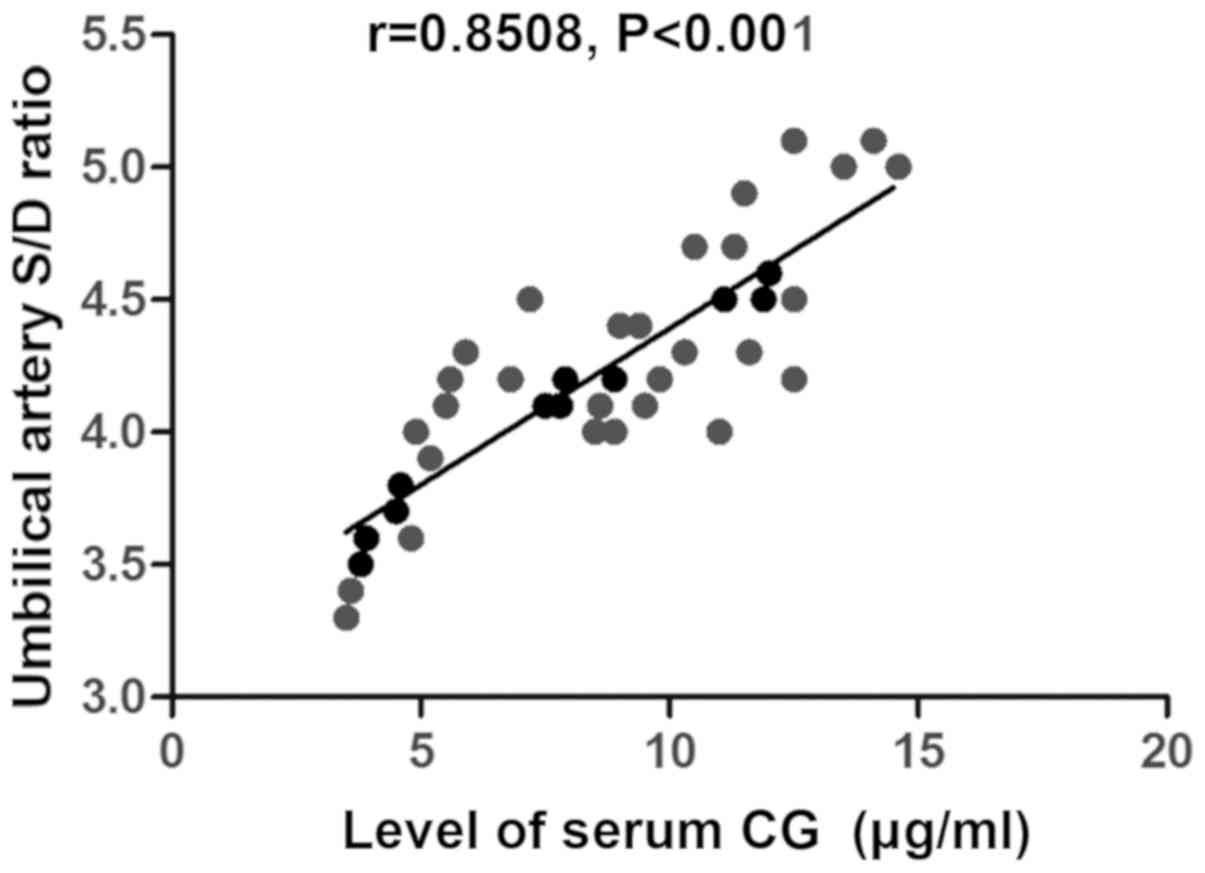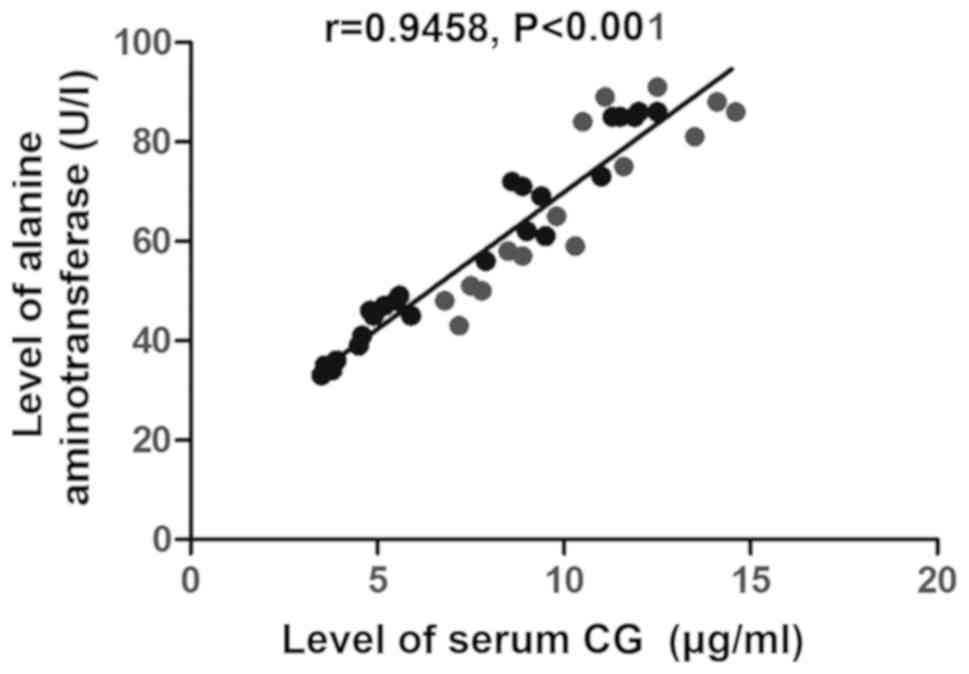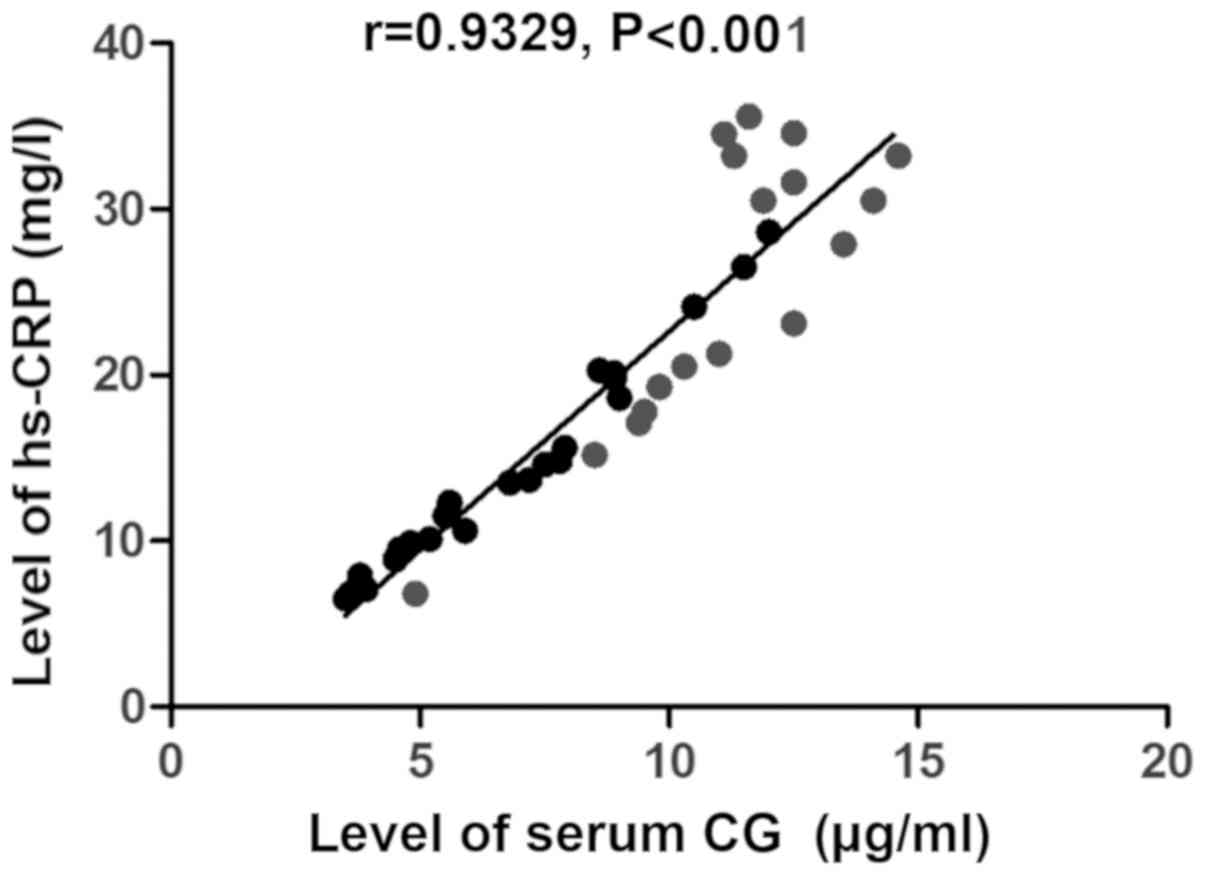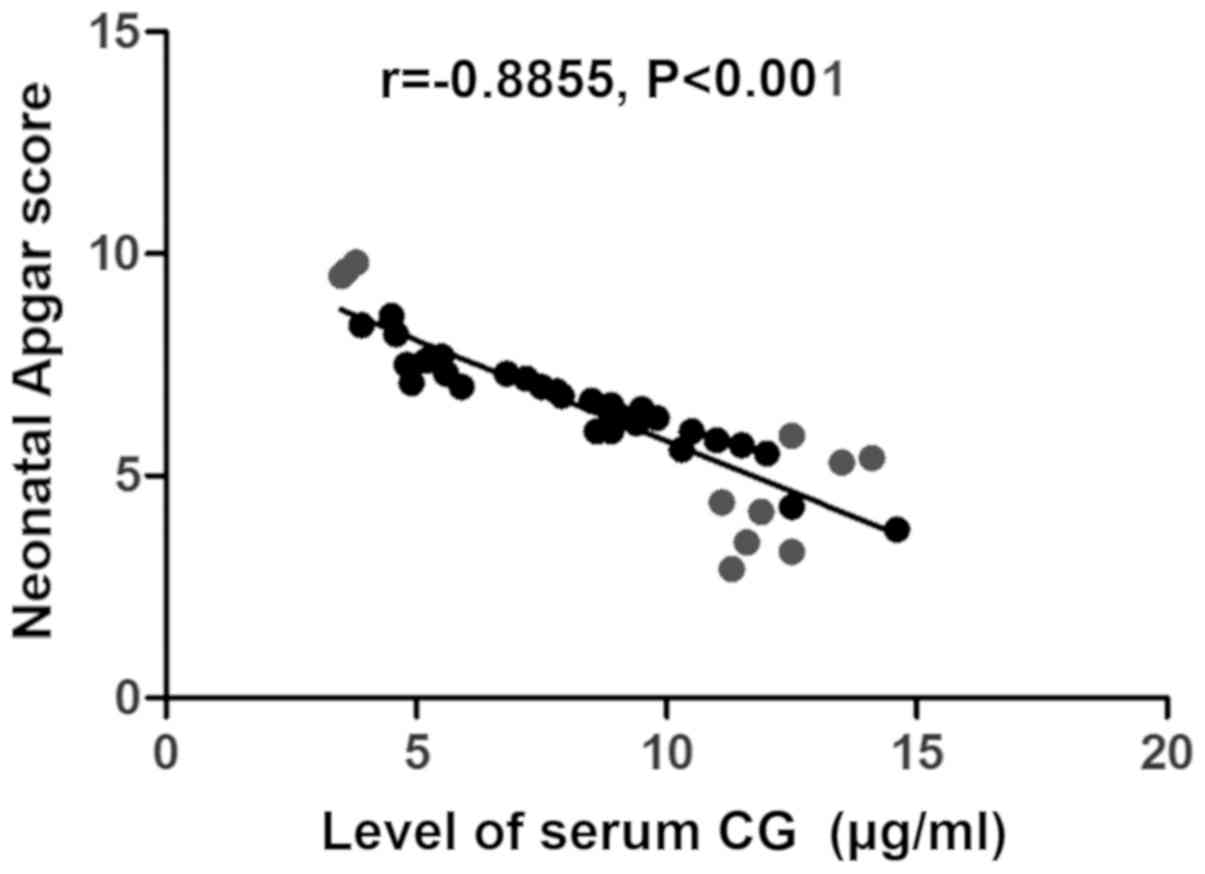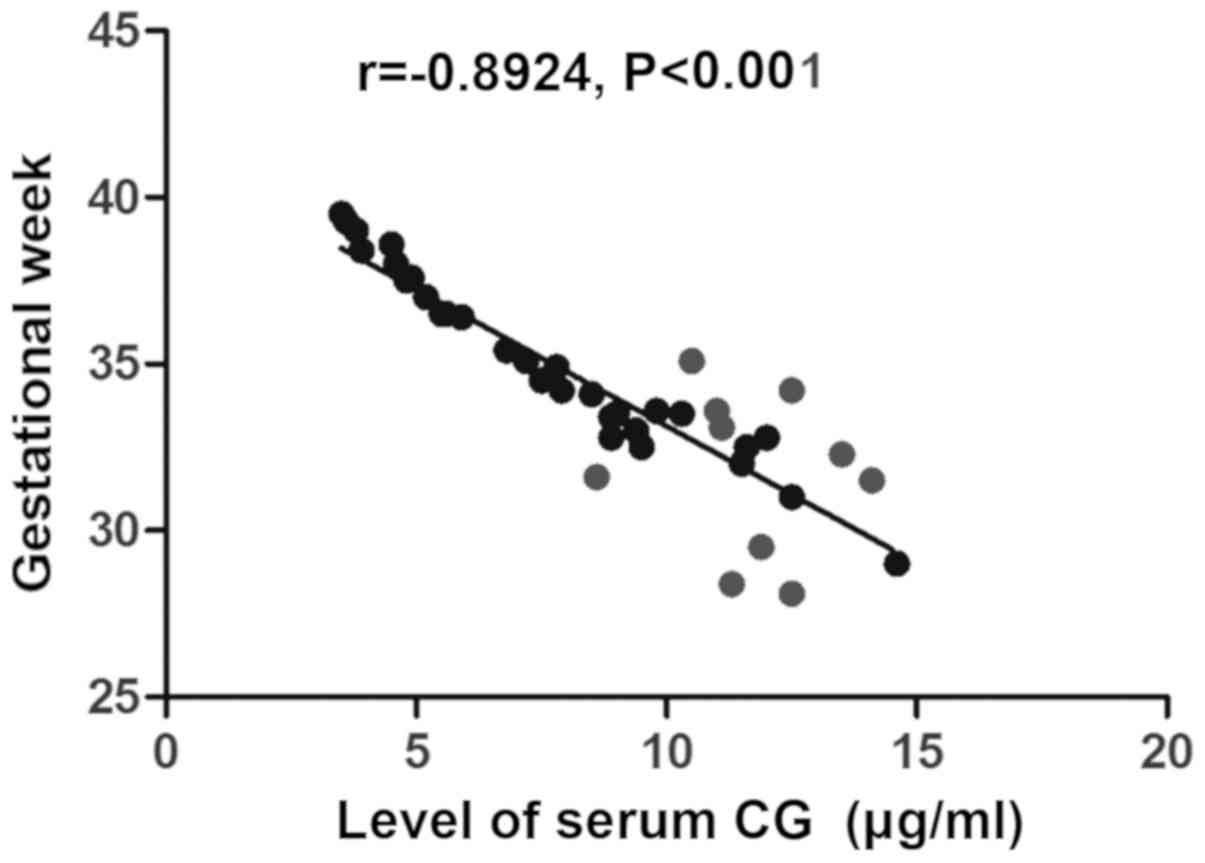|
1
|
Estiú MC, Frailuna MA, Otero C, Dericco M,
Williamson C, Marin JJG and Macias RIR: Relationship between early
onset severe intrahepatic cholestasis of pregnancy and higher risk
of meconium-stained fluid. PLoS One. 12:e01765042017. View Article : Google Scholar : PubMed/NCBI
|
|
2
|
Günaydin B, Bayram M, Altuğ M, Cevher S
and Bozkurt N: Retrospective analysis of maternal, fetal, and
neonatal outcomesof intrahepatic cholestasis of pregnancy at Gazi
University. Turk J Med Sci. 47:583–586. 2017. View Article : Google Scholar : PubMed/NCBI
|
|
3
|
Kong X, Kong Y, Zhang F, Wang T and Zhu X:
Expression and significance of dendritic cells and Th17/Treg in
serum and placental tissues of patients with intrahepatic
cholestasis of pregnancy. J Matern Fetal Neonatal Med. 31:901–906.
2018. View Article : Google Scholar : PubMed/NCBI
|
|
4
|
Tayyar AT, Kozalı S, Yetkin Yildirim G,
Karakus R, Yuksel IT, Erel O, Neselioglu S and Eroglu M: Role of
ischemia-modified albumin in the evaluation of oxidative stress in
intrahepatic cholestasis of pregnancy. J Matern Fetal Neonatal Med.
11:1–5. 2018. View Article : Google Scholar
|
|
5
|
Sharifzadehgan S, Hermann M, Nedellec S,
De Luca D and Benachi A: Intrahepatic cholestasis of pregnancy:
Shorter duration of labor? Eur J Obstet Gynecol Reprod Biol.
225:258–259. 2018. View Article : Google Scholar : PubMed/NCBI
|
|
6
|
Feng C, Li WJ, He RH, Sun XW, Wang G and
Wang LQ: Impacts of different methods of conception on the
perinatal outcome of intrahepatic cholestasis of pregnancy in twin
pregnancies. Sci Rep. 8:39852018. View Article : Google Scholar : PubMed/NCBI
|
|
7
|
Wood AM, Livingston EG, Hughes BL and
Kuller JA: Intrahepatic cholestasis of pregnancy: A review of
diagnosis and management. Obstet Gynecol Surv. 73:103–109. 2018.
View Article : Google Scholar : PubMed/NCBI
|
|
8
|
Covach AJ and Rose WN: Intrahepatic
cholestasis of pregnancy refractory to multiple medical therapies
and plasmapheresis. AJP Rep. 7:e223–e225. 2017. View Article : Google Scholar : PubMed/NCBI
|
|
9
|
Floreani A and Gervasi MT: New insights on
intrahepatic cholestasis of pregnancy. Clin Liver Dis. 20:177–189.
2016. View Article : Google Scholar : PubMed/NCBI
|
|
10
|
Koroglu N, Tayyar A, Tola EN, Yetkin
Yildirim G, Temel Yuksel I, Aslan Cetin B, Dag I and Acar DK:
Increased levels of the novel hepatokine fetuin B in patients with
intrahepatic cholestasis of pregnancy. J Matern Fetal Neonatal Med.
12:1–6. 2017.
|
|
11
|
Lin J, Gu W and Hou Y: Diagnosis and
prognosis of early-onset intrahepatic cholestasis of pregnancy: a
prospective study. J Matern Fetal Neonatal Med. 7:1–7. 2017.
|
|
12
|
Mei Y, Gao L, Lin Y, Luo D, Zhou X and He
L: Predictors of adverse perinatal outcomes in intrahepatic
cholestasis of pregnancy with dichorionic diamniotic twin
pregnancies. J Matern Fetal Neonatal Med. 32:472–476. 2019.
View Article : Google Scholar : PubMed/NCBI
|
|
13
|
Adeyemi O, Alvarez-Laviada A, Schultz F,
Ibrahim E, Trauner M, Williamson C, Glukhov AV and Gorelik J:
Ursodeoxycholic acid prevents ventricular conduction slowing and
arrhythmia by restoring T-type calcium current in fetuses during
cholestasis. PLoS One. 12:e01831672017. View Article : Google Scholar : PubMed/NCBI
|
|
14
|
Li L, Chen YH, Yang YY and Cong L: Effect
of intrahepatic cholestasis of pregnancy on neonatal birth weight:
A meta-analysis. J Clin Res Pediatr Endocrinol. 10:38–43. 2018.
View Article : Google Scholar : PubMed/NCBI
|
|
15
|
Dadhwal V, Sharma A, Khoiwal K, Deka D,
Sarkar P and Vanamail P: Pregnancy outcomes in HIV-infected women:
Experience from a tertiary care center in India. Int J MCH AIDS.
6:75–81. 2017. View Article : Google Scholar : PubMed/NCBI
|
|
16
|
Maldonado M, Alhousseini A, Awadalla M,
Idler J, Welch R, Puder K, Patwardhan M and Gonik B: Intrahepatic
cholestasis of pregnancy leading to severe vitamin K deficiency and
coagulopathy. Case Rep Obstet Gynecol. 2017:56462472017.PubMed/NCBI
|
|
17
|
Herrera CA, Manuck TA, Stoddard GJ, Varner
MW, Esplin S, Clark EAS, Silver RM and Eller AG: Perinatal outcomes
associated with intrahepatic cholestasis of pregnancy. J Matern
Fetal Neonatal Med. 31:1913–1920. 2018. View Article : Google Scholar : PubMed/NCBI
|
|
18
|
Mattila M, Kemppainen H, Isoniemi H and
Polo-Kantola P: Pregnancy outcomes after liver transplantation in
Finland. Acta Obstet Gynecol Scand. 96:1106–1111. 2017. View Article : Google Scholar : PubMed/NCBI
|
|
19
|
Tayyar A, Temel Yuksel I, Koroglu N, Tanay
Tayyar A, Alici Davutoglu E, Akkaya Firat A and Aslan Cetin B:
Maternal copeptin levels in intrahepatic cholestasis of pregnancy.
J Matern Fetal Neonatal Med. 31:2066–2070. 2018. View Article : Google Scholar : PubMed/NCBI
|
|
20
|
Sanhal CY, Daglar K, Kara O, Yılmaz ZV,
Turkmen GG, Erel O, Uygur D and Yucel A: An alternative method for
measuring oxidative stress in intrahepatic cholestasis of
pregnancy: Thiol/disulphide homeostasis. J Matern Fetal Neonatal
Med. 31:1477–1482. 2018. View Article : Google Scholar : PubMed/NCBI
|
|
21
|
Türkmen GG, Timur H, Yilmaz Z, Kirbas A,
Daglar K, Tokmak A, Uygur D and Danişman N: Effect of intrahepatic
cholestasis of pregnancy on maternal serum screening tests. J
Neonatal Perinatal Med. 9:411–415. 2016. View Article : Google Scholar : PubMed/NCBI
|















